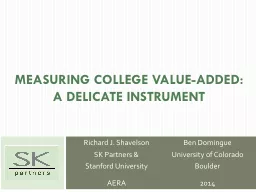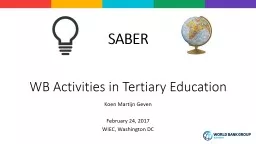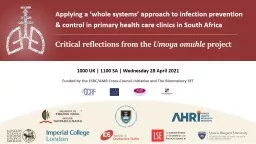PPT-SABER – Systems Approach for Better Education Results
Author : test | Published Date : 2018-11-10
Tertiary Education Governance World Congress of Colleges and Polytechnics Halifax May 26 2012 Quentin Wodon World Bank 1 Structure of presentation SABER goals
Presentation Embed Code
Download Presentation
Download Presentation The PPT/PDF document "SABER – Systems Approach for Better Ed..." is the property of its rightful owner. Permission is granted to download and print the materials on this website for personal, non-commercial use only, and to display it on your personal computer provided you do not modify the materials and that you retain all copyright notices contained in the materials. By downloading content from our website, you accept the terms of this agreement.
SABER – Systems Approach for Better Education Results: Transcript
Download Rules Of Document
"SABER – Systems Approach for Better Education Results"The content belongs to its owner. You may download and print it for personal use, without modification, and keep all copyright notices. By downloading, you agree to these terms.
Related Documents














